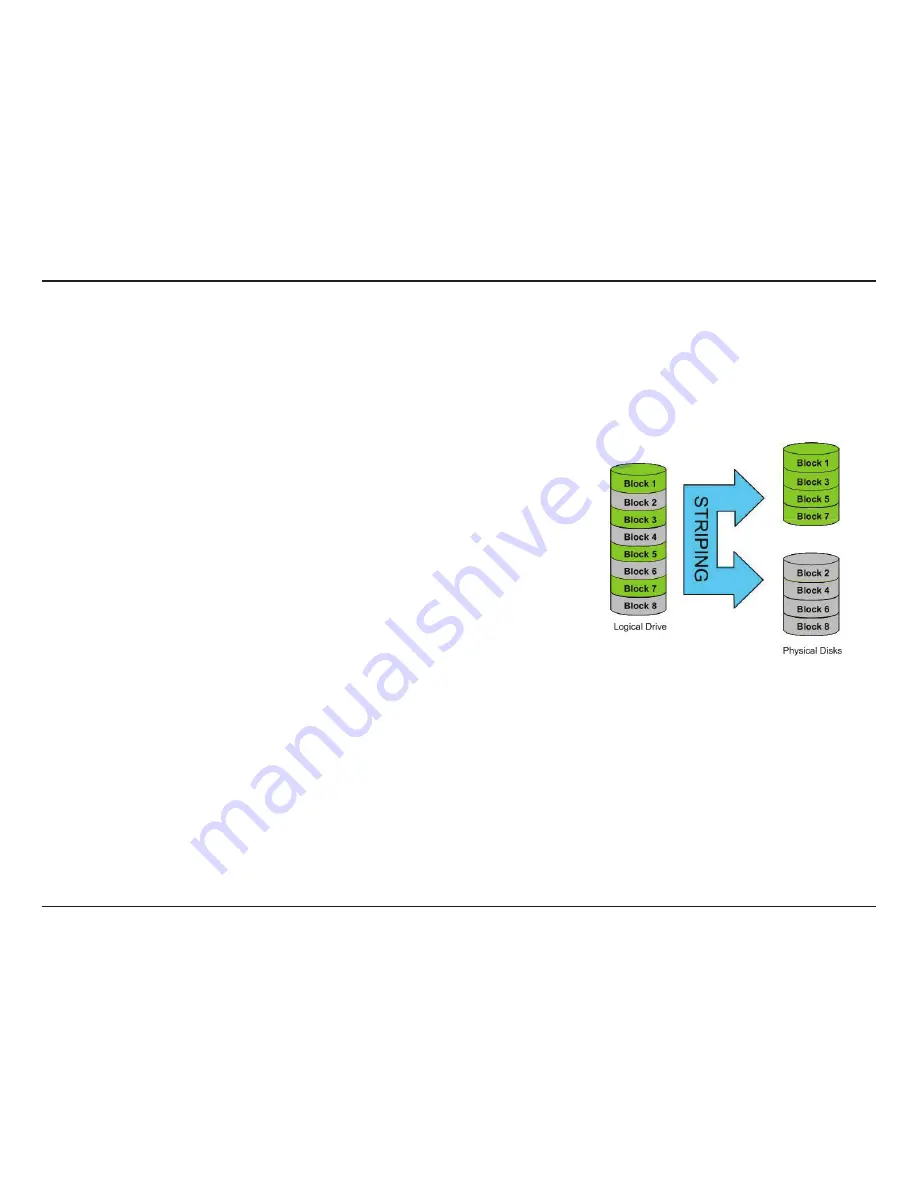
429
D-Link ShareCenter DNS-340L User Manual
Section 5 - Knowledge Base
Knowledge Base
What is RAID?
RAID, short for Redundant Array of Independent Disks, is a combination of two or more disks with the aim of providing fault
tolerance and performance improvement. There are several different levels of RAID, with each one providing a different
method of sharing or distributing data amongst the drives. The DNS-340L supports Standard, JBOD, RAID 0, 1, 5, and 10.
A RAID array will degrade when one of the hard drives fails. Auto-Rebuild
allows a degraded RAID array to be automatically rebuilt when the failed
hard drive is replaced by automatically restoring data from the existing hard
drive to the newly inserted hard drive.
Standard
Creates two separate volumes (or one volume if only one hard drive is
present). Each hard drive is its own volume improving
performance but the
lack of any RAID or mirroring means that if one drive fails, all data on the
volume will be lost.
JBOD (Linear)
Combines both hard drives in a linear fashion which will create one large
volume geared towards maximum available space.
It offers no redundancy
and limited data protection.
RAID 0
Combines both hard drives in a striped fashion which will create one large
volume geared towards maximum performance.
Although performance is
improved, the lack of fault tolerance means that if one drive fails, all data in
the array will be lost.






























